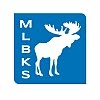- The first thing to do is examine your last bank reconciliation, to determine which cheques are still outstanding, plus any cheques you have written since. Add to this figure, any Pre-Authorized Payments (PAPs) you have set up and your estimated bank fees. You can then transfer any funds surplus to this amount to the new account.
- With money now transferred, you can change your PAPs to the new account.
- Continue monitoring your PAPs. If funds are withdrawn from the old accounts, replace them to avoid any NSF charges, in the unlikely event two payments are processed before the change occurs.
- After you have confirmed that all of your PAPs are appearing in your new accounts, and the outstanding cheques have also cleared, you can close your old accounts. If you have only one or two cheques left outstanding, you may wish to issue a stop-payment and send a replacement cheque.
As always, I invite your comments and suggestions for future post topics. Next week – How to reconcile your PCLaw Accounts Receivable with your client’s Accounts Payable.
Clyde

No comments:
Post a Comment
I welcome any comments or feedback.
Do you have a question? Do you have a topic for a future article?